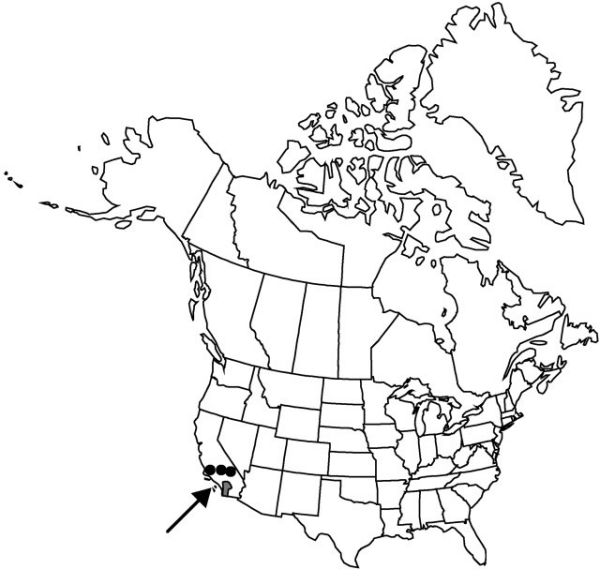Nolina parryi
Proc. Amer. Acad. Arts 14: 247. 1879.
Plants caulescent; rosettes from woody, branched caudices and forming small colonies. Stems 5–21 dm. Leaves 65–220 per rosette; blade wiry, upright, or lax, 50–140 cm × 20–40 mm, rarely glaucous; bases broad, spoon-shaped, 5–16.5 cm wide; margins serrulate, not filiferous. Scape 4–17 dm, 26–90 mm diam. at base. Inflorescences compound paniculate, 9–18 × 20–130 cm; bracts persistent, 15–36 cm, papery; bractlets laciniate, to 10 mm, fragile. Flowers: tepals 2.5–5 mm; fertile stamens: filaments 3–4 mm, anthers 1.3–1.8 mm; infertile stamens: filaments 1–2.5 mm, anthers 0.4–0.5 mm; pedicel erect, proximal to joint 0.5–2 mm, distal to joint 1–2 mm. Capsules thin-walled, 9–13 × 8–11 mm, notched basally and apically. Seeds reddish-brown, ovoid to oblong, bursting ovary wall, 3–4 2–3 mm. 2n = 38.
Phenology: Flowering spring.
Habitat: Rocky slopes of desert and pinyon-juniper woodlands
Elevation: 900–2100 m
Discussion
When P. A. Munz and J. C. Roos (1950) named Nolina parryi subsp. wolfii, a mountain woodland plant, the related coastal entity became known as N. parryi subsp. parryi. J. C. Dice (1988) determined that the mountain entity, not the coastal one, was probably the basis for Watson’s N. parryi. Consequently, Dice reduced subsp. wolfii to synonymy under subsp. parryi, which left the coastal plants without a distinguishing name. Dice has named the plants as a separate species, N. cismontana.
Selected References
None.
Lower Taxa
"dm" is not declared as a valid unit of measurement for this property. "dm" is not declared as a valid unit of measurement for this property."dm" is not declared as a valid unit of measurement for this property."dm" is not declared as a valid unit of measurement for this property.
